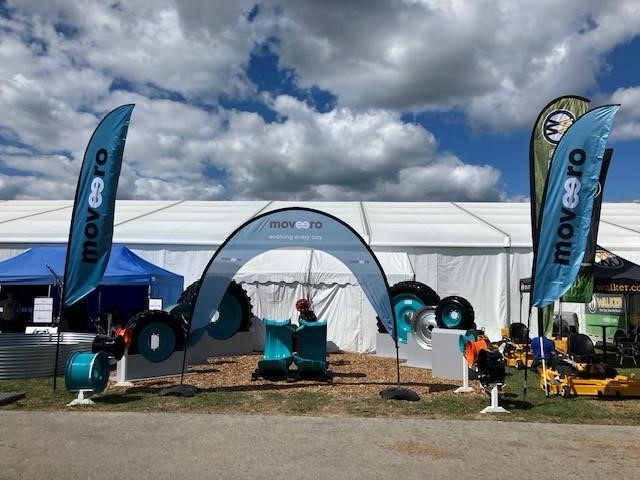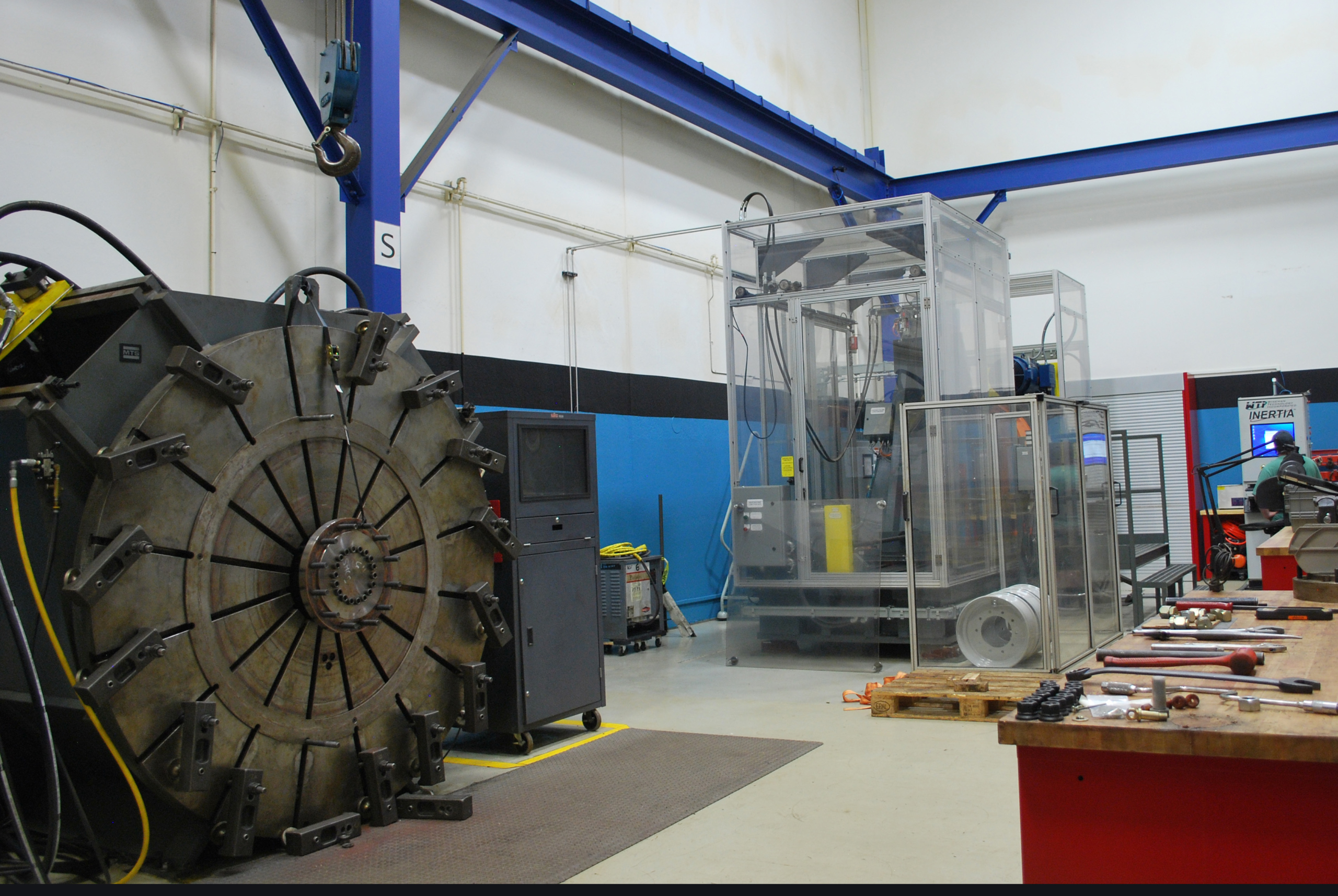
Home / Center of excellence for wheels and spindles in North America

moveero’s research, development and test facility located in Woodridge, Illinois, is home to our state-of-the-art wheel and hub testing equipment which provides a dedicated center of excellence for customers across North America and internationally.
What services does the R&D Center offer customers?
As our Center of Excellence, the state-of the-art facility provides a range of tailored services for both established and new customers, as well as invaluable support for our manufacturing operations. At the sharp end of our new product development programme, the Woodridge team provide a broad range of industry-leading support services, including:
What do we test and why?
We have in-house a range of industry leading, state-of-the-art equipment, which is used to test a range of wheel parameters; from load and fatigue to the impact of cornering and uphill movements, as well as speed and the environment.
Located in Woodridge, it is the home to our cornering and radial fatigue wheel testing equipment, as well as hub testing equipment. At the site, we test wheels – with and without tires – for a huge variety of off highway machines, particularly in the agricultural and construction sectors. We also have the unique ability to carry out bolted joint analysis as well as other strain gauge simulation testing. Wheel-testing can be carried out to simulate virtually any operating conditions, providing accurate performance data which is not only invaluable to customers, but is also fed into our manufacturing, development and investment plans for Armstrong & Estherville, information which is invaluable for driving product development, productivity and increasing manufacturing efficiencies.
The team also undertakes FEA analysis and data capture exercises on the tests that we run, the results of which are fed into our data bank. This helps build our knowledge around wheel designs and trends and helps us to respond quickly to customers’ request for support. By building knowledge with our customer and through data capture, we can share that knowledge and experience with other customers, should a similar request arise.
In-field tests are also part of the support we provide to both new and long-standing customers. Testing in a simulated lab environment is beneficial and helps speeds up the test process and result output, but at times field tests are required to truly simulate a machine’s real-world operating environment.
Do we also test hub products?
Yes, we test hub systems, and Woodridge is home to the world’s largest hub testing machine, which can apply loads up to 100,000 lbs and carries out dynamic cornering fatigue testing of the hub and spindle assembly. Our engineers control the test load, the spindle length, and test speed to replicate the maximum bearing loads of the system under the most extreme conditions.
This capability means that high-capacity agricultural and construction hubs can be tested in-house, virtually eliminating the need for expensive and time-consuming field testing for customers. This is a unique service, which sets us apart from our competition, and which enables our engineers to develop larger hubs more quickly and more efficiently to meet the needs of our customers; a significant benefit to both them and us.
Who do you work with at the R&D Centre?
We work closely and in partnership with both original equipment (OE) and tire manufacturers.
With the trend to higher capacity, higher speed and higher load machinery, OE and tire manufacturers are constantly evolving their existing product ranges and developing new ones. But it is not always about new wheel designs. We do introduce new rim profiles, changes to discs and different sizes, but sometimes it isn’t the rim that changes, but another part of the customer’s machine, and therefore we need to evaluate and reassure the customer about the impact this may have on the relationship of their machine with the wheel. For example, as new tire technology is introduced, we have a vital role to play in ensuring that the wheel is still able to handle the radial and cornering loads that are placed on it. If not, we work collaboratively with our customers and partners to develop practical, cost-effective solutions.
In the agriculture sector, there is a clear trend towards IF and VF tires which are designed to run at reduced inflation pressures to reduce soil compaction. However, at normal inflation pressures, these tires can run at higher loads which makes qualifying wheels for these tires more challenging. Understanding tire technology and verifying load capacities is a crucial part of the validation process, even before the OE launches the new tire. Even though the tractor itself may not have changed, the relationship and performance of the wheel due to a change in tire can significant impact on vehicle load capacity and cornering performance, which in turn affects the efficiency of the machine and durability and safety of the wheel.
In addition to testing and validating the wheel and tire together, we can use test data to develop new products. An example being the development of the TW Profi product range. Profi-Fit TW allows high-load capacity tires, with very stiff sidewalls, to be mounted easily and with no risk of tire or rim edge damage (which can often be the case when DW profile rims are used). Profi-Fit enables tyres to be mounted 25% faster and with 30% less inflation pressure, driving both efficiency and safety benefits. The rim design, including standard knurling, mean the tire bead sits correctly within the rim, which in turn eliminates tire damage. Product introductions like the Profi family bring a solutions approach to customers, with these innovative and patented wheel designs truly setting us apart from the competition.
Who do we run tests for?
We carry out tests routinely for many OE manufacturers, enabling them to determine the viability of new equipment or tire designs on their existing wheels much more quickly than if they had to carry out field tests. Detailed analysis is often the first stage of this, where we can give the manufacturer confidence in a new design, before progressing to lab tests. With our experienced team, we have developed extremely strong relationships with OE engineers, ensuring a collaborative, two-way relationship.
Similarly by working closely with the tire manufacturers, if a new tire is to be released, we aim to have a wheel verified that has been tested with it, giving the OE manufacturers and integrators confidence in the new tire/wheel combination.
By understanding the market and working closely with tire manufacturers, we can eliminate the risk to the OEM, who can then ultimately offer better products to their customers, the end users.
Tell us more about the team in Woodridge?
We have a team with unrivalled experience and expertise. Independent of any tire manufacturer, our team is totally focused on wheel design, bringing their engineering skills to develop products and systems that meet customers’ changing needs, whether it be on new machine platforms, modifications to existing machines, or a change of supplier. This is a unique position in our industry and means we can solve problems and deliver solutions to customers through improved wheels and not through changes to the tire.
The Woodridge team, recognize that a tire is a sophisticated composite material and the way it applies loads to a wheel, and how it reacts to and interacts with a wheel is extremely complex. With our experience however, we can ‘demystify’ this tire/wheel relationship and, drawing on decades of experience and robust data, quickly make the right design and engineering decisions. We can then work closely with any tire manufacturer to ensure that the wheel and tire interact correctly to deliver optimum performance as an integrated system for the vehicle.
Although located independently from moveero’s North American production plant, our team at Woodridge nevertheless works extremely closely with their manufacturing colleagues daily, ensuring that from initial design right through to final manufacture, all elements of the business are closely aligned. We look for material and process improvements in conjunction with the plant, ensuring we are always manufacturing at the optimum levels and to the quality standards that are expected of a world class supplier.
What about Research & Development; are we looking towards the future?
At Woodridge we are focused on the future, identifying trends in machine and tire manufacture and making sure that the next generation of wheels is ready to meet the market demands.
Whether its autonomous and electric vehicles, or more powered equipment (sprayers etc), bigger wheels or higher horsepower – the R&D team is driven to design and develop technically excellent solutions that deliver the performance, safety, durability and value that our global and regional customers require.
A growing trend is towards higher horsepower and mid-size tractors, with mid-size machines being used beyond their traditional agricultural applications. Now much more utilitarian, the combination of attachments and applications for these machines is almost infinite. As a result, we are making sure that the wheel specification is suitable for this diverse range of applications, again with a focus on loads, tyre inflation pressures, speed and capacity requirements.
Our technical support and design excellence are unequalled in the market, and when combined with our independence and agility, allows our team to focus entirely on meeting the current and future needs of our customers and the markets in which they operate.